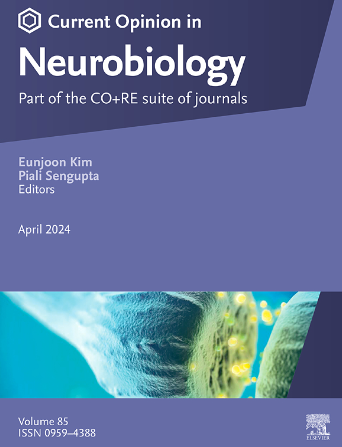肠内分泌细胞刺激检测和分泌的分子机制
IF 5.2
2区 医学
Q1 NEUROSCIENCES
引用次数: 0
摘要
肠内分泌细胞(EECs)分泌超过20种不同的肠道激素,以响应肠道环境的变化。它们通过激活一系列营养感应g蛋白偶联受体和电致营养共运输来检测一系列营养刺激。这些激活细胞内信号通路,汇聚到膜去极化和动作电位的产生,从而引起分泌。新出现的证据表明,eec也对非营养刺激做出反应,包括机械感觉、pH变化和肠道微生物群产生的代谢物。EECs是多激素细胞,其中激素的表达是可塑的,依赖于肠道的位置。脑脊液分泌的激素和小分子神经递质可以激活外源性迷走神经传入,调节食欲和食物偏好等中枢过程。虽然有时发现神经元事件与脑脊液非常接近,但脑脊液/神经元连接在多大程度上再现了传统的突触连接仍未确定。本文章由计算机程序翻译,如有差异,请以英文原文为准。
Molecular mechanisms of stimulus detection and secretion in enteroendocrine cells
Enteroendocrine cells (EECs) secrete over 20 different gut hormones in response to changes to the gut environment. They detect a range of nutritional stimuli through activation of a host of nutrient-sensing G-protein–coupled receptors and electrogenic nutrient cotransport. These activate intracellular signalling pathways which converge on membrane depolarisation and action potential generation, which elicit secretion. Emerging evidence has demonstrated that EECs also respond to non-nutritional stimuli, including mechanosensation, pH changes, and metabolites produced by the gut microbiome. EECs are polyhormonal cells, in which hormone expression is plastic and dependent on location in the gut. Hormones and small-molecule neurotransmitters secreted by EECs can activate extrinsic vagal afferents, modulating central processes such as appetite and food preference. While neuronal afferents are sometimes found in close proximity to EECs, the extent to which EEC/neuronal connections recapitulate traditional synaptic connections remains undefined.
求助全文
通过发布文献求助,成功后即可免费获取论文全文。
去求助
来源期刊

Current Opinion in Neurobiology
医学-神经科学
CiteScore
11.10
自引率
1.80%
发文量
130
审稿时长
4-8 weeks
期刊介绍:
Current Opinion in Neurobiology publishes short annotated reviews by leading experts on recent developments in the field of neurobiology. These experts write short reviews describing recent discoveries in this field (in the past 2-5 years), as well as highlighting select individual papers of particular significance.
The journal is thus an important resource allowing researchers and educators to quickly gain an overview and rich understanding of complex and current issues in the field of Neurobiology. The journal takes a unique and valuable approach in focusing each special issue around a topic of scientific and/or societal interest, and then bringing together leading international experts studying that topic, embracing diverse methodologies and perspectives.
Journal Content: The journal consists of 6 issues per year, covering 8 recurring topics every other year in the following categories:
-Neurobiology of Disease-
Neurobiology of Behavior-
Cellular Neuroscience-
Systems Neuroscience-
Developmental Neuroscience-
Neurobiology of Learning and Plasticity-
Molecular Neuroscience-
Computational Neuroscience
 求助内容:
求助内容: 应助结果提醒方式:
应助结果提醒方式:


